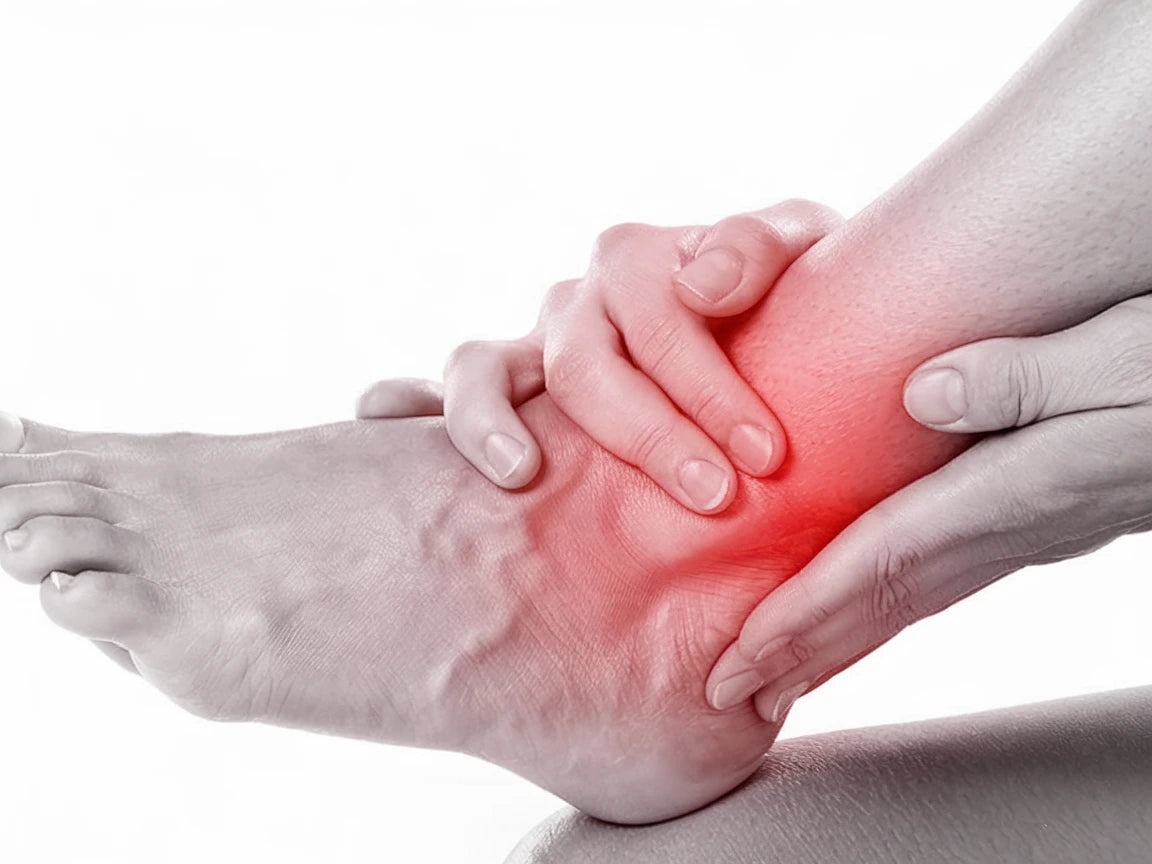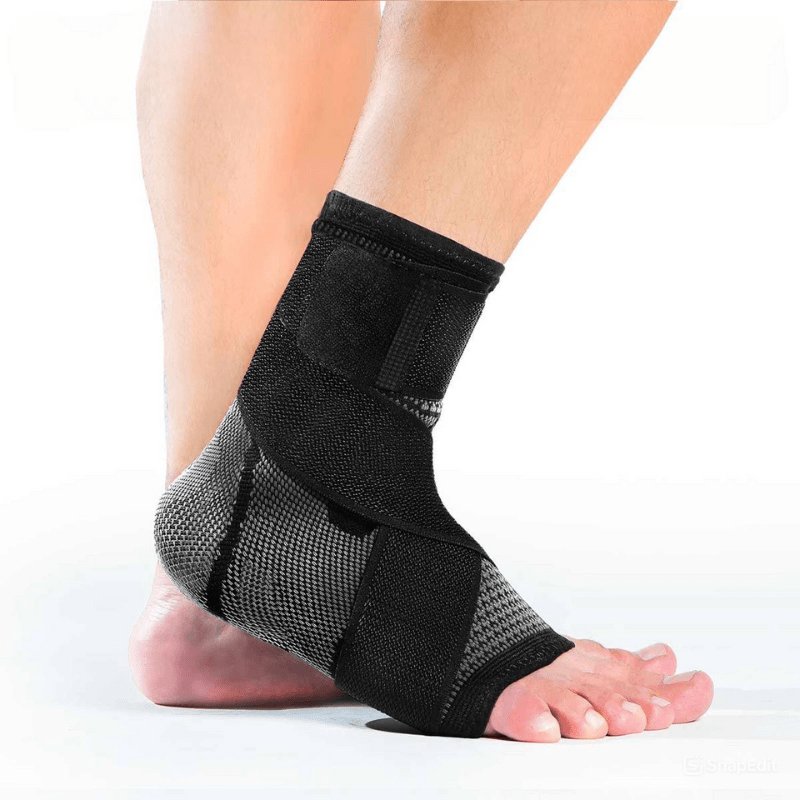Arthritis in the Foot: Symptoms, Causes, and Treatment

Osteoarthritis of the foot is a common condition that affects the joints in the foot and can cause pain, stiffness, and reduced mobility. It is one of the most common joint problems that affects many people, especially the elderly. This article reviews the most common symptoms, causes, and treatment options for osteoarthritis of the ankle.
What is ankle osteoarthritis and why does it affect you?
Ankle osteoarthritis is a degenerative joint disease where the cartilage in the joints breaks down faster than it is built up. There are several joints in the foot that can be affected, but the most common is the big toe joint or the ankle joint . This can lead to pain and limited function, especially when under load.
The cause of osteoarthritis can be several factors, including natural aging, but also heredity and previous injuries to the ankle or leg. The development of osteoarthritis is also influenced by lifestyle factors such as obesity and type of physical activity.
Symptoms of osteoarthritis in the foot
Common symptoms of osteoarthritis in the foot include:
- Pain in the foot, especially with strain or activity (stress pain)
- Stiffness, often most noticeable in the morning or after rest
- Swelling around the affected joints
- Reduced mobility and difficulty moving the foot normally
- Limping or altered gait pattern
- Feeling that the joint is "hooking" or cracking when moving
- In later stages, bone spurs may form, which can cause pressure pain from shoes.
The symptoms of osteoarthritis can vary in intensity and often gradually worsen over time if the condition is left untreated. It is important to recognize these early signs in order to take preventive measures. Similar symptoms also occur in hallux valgus , which is sometimes confused with osteoarthritis-related stiffness and pain.
Common risk factors for osteoarthritis in the foot
Osteoarthritis of the ankle can be caused by several risk factors:
- Aging: Cartilage naturally breaks down over time
- Previous injuries: Injuries such as fractures or sprains to the ankle or leg can increase the risk of osteoarthritis.
- Overuse: Repetitive movements or heavy load on the ankle
- Genetic factors: Heredity may play a role in who gets osteoarthritis
- Excess weight: Extra weight increases the strain on the joints in the foot
Previous injuries such as broken bones in the foot or lower leg are a particularly common cause of osteoarthritis in the ankle.
How to treat osteoarthritis in the foot – self-care, relief and medical help
Treatment aims to relieve pain, improve mobility, and reduce strain on the affected joints. Common treatment methods include:
| Behandlingsmetod | Beskrivning | Fördelar med FotSupporten 2.0 |
|---|---|---|
| Fysioterapeut | Övningar för att stärka musklerna runt fotleden | Förbättrar stabilitet och funktion |
| Skoinlägg | Anpassade inlägg för att avlasta lederna | Minskar tryck och smärta |
| Smärtstillande läkemedel | NSAID för att minska värk och inflammation | Lindrar akuta symtomen |
| FotSupporten 2.0 | Stödjande ortos som ger kompression och stabilitet | Minskar värk och förbättrar rörlighet |

How the FootSupport 2.0 can alleviate and provide relief from osteoarthritis in the foot
The Foot Support 2.0 is a specially designed support that offers several benefits for people with osteoarthritis in the foot:
- Compression: Reduces swelling and inflammation in the affected joint
- Support: Provides stability to the ankle during daily activities
- Pain relief: Helps relieve pressure on inflamed joints
- Increased comfort: Can be used both during physical activity and everyday life
By using the FootSupport 2.0 regularly, you can relieve the discomfort of osteoarthritis and improve your quality of life. This aid is ideal when used with custom insoles or shoes with roller soles for optimal relief. The support is particularly effective for people with burning feet where inflammation and increased sensitivity occur together with osteoarthritis.
Buy nowSummary – relieve discomfort and improve quality of life in ankle osteoarthritis
Osteoarthritis of the ankle is a common condition that can cause significant discomfort if not managed properly. By combining the right treatment, custom aids like the FootSupport 2.0, and lifestyle changes, you can effectively manage your symptoms and improve your mobility.
It is important to consider the cause of osteoarthritis in your specific situation and work proactively to reduce the progression of osteoarthritis over time. Reducing stress on the joints through weight management and appropriate activities is just as important as using the right support.
It is important to consult a doctor or physiotherapist for a correct diagnosis and individual treatment plan that takes into account your specific needs and the symptoms of osteoarthritis you are experiencing. The FootSupport 2.0 is a proven aid that provides support, reduces pain and facilitates everyday movements.
Frequently Asked Questions (FAQ)
How do I know if I have osteoarthritis in my foot?
Typical signs include pain when exerting weight, stiffness after rest, swelling around the joints, and reduced mobility in the ankle.
Can I continue to be active with osteoarthritis in my foot?
Yes, it is important to stay active with appropriate exercises to strengthen the muscles around the joint and maintain mobility. Your physiotherapist can recommend appropriate physical activity.
How does the FootSupport 2.0 help with osteoarthritis?
The Foot Support 2.0 provides compression and support that reduces pain, swelling and improves stability in the ankle, helping to alleviate daily discomfort.
Can osteoarthritis get worse over time?
Yes, if left untreated, cartilage can continue to break down, which can lead to more pain and limited function. Preventive measures can help slow the progression of osteoarthritis.
When should I seek treatment for osteoarthritis in the foot?
If you experience persistent pain, difficulty walking, or if your symptoms worsen, you should see a doctor for an evaluation. The sooner you get the right treatment, the better you can manage your symptoms.

